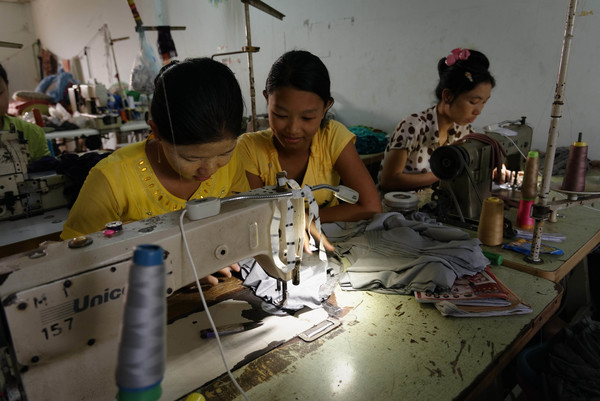Myanmar, a nation rich in cultural heritage and natural resources, has faced significant economic challenges in recent years. The current political instability and the aftermath of the COVID-19 pandemic have severely impacted its trade and growth prospects. However, Myanmar's economic landscape is full of opportunities.
Myanmar's economy faces several significant obstacles, with political instability, disregard for rule of law, and ongoing human rights violations being the most prominent ones. The military coup in February 2021 led to widespread unrest, disrupting economic activities and eroding investor confidence.
Trade disruptions have also played a critical role in Myanmar's economic downturn. Sanctions imposed by Western countries, coupled with the suspension of the Generalized System of Preferences (GSP) by the European Union (EU), have hindered exports, particularly in the garment industry, which is a major contributor to Myanmar's economy. Additionally, the COVID-19 pandemic exacerbated these challenges by disrupting supply chains worldwide and reducing global demand.
Another significant obstacle is the lack of infrastructure. Myanmar's inadequate transportation networks, unreliable power supply, and limited digital infrastructure have constrained economic growth and development. The Asian Development Bank (ADB) highlights that poor infrastructure is a critical problem that needs to be addressed to unlock Myanmar's economic potential.
Despite these challenges, Myanmar has several areas fit for future growth. The garment industry, for instance, has been a driver of employment and export revenues. With its low labour costs and skilled workforce, Myanmar has the potential to become an international player in the textile market once political stability is restored. Attracting international trade partners and improving compliance with labour and environmental standards can help Myanmar gain access to lucrative markets in the US and Europe.
Agriculture is another sector with significant growth potential. Myanmar has fertile land and a favourable climate for various crops, including rice, pulses, and beans. With modern agricultural practices, improved supply chain logistics, and investment in value-added processing, Myanmar will enhance its productivity and increase exports. The Food and Agriculture Organization (FAO) emphasises the need for investment in agricultural technology and infrastructure to boost yields and improve market access.
The tourism industry, flourishing before the pandemic and political turmoil, is a promising part of an economic recovery after a political normalization. Myanmar's rich cultural heritage, historical sites, and natural beauty make it an attractive destination for international tourists. Once safety and stability in the country are restored, the tourism sector can be restored through infrastructure development, marketing campaigns, and sustainable tourism practices. These can generate substantial revenue and create new job opportunities.
To make use of these opportunities, Myanmar should focus on several strategic initiatives. Firstly, political stability is paramount. Establishing a stable and inclusive government will be essential to restoring the safety of citizens, their livelihoods, and their jobs, as well as investor confidence and re-engaging with the international community.
Secondly, Myanmar should focus on infrastructure development. Investing in transportation networks, energy infrastructure, and digital connectivity will create a promising environment for business growth and attract foreign investment. Public-private partnerships and international funding can play a crucial role in financing these projects.
Thirdly, enhancing human capital is critical. Improving access to education and vocational training will equip Myanmar's workforce with the skills needed for a modern economy. Special attention should be given to digital literacy and technical skills to support the growth of emerging sectors, such as information technology and services, which will enable Myanmar to be competitive in its region.
Finally, Myanmar must adopt policies that promote sustainable and inclusive growth. This includes supporting emerging small and medium-sized enterprises, fostering innovation, and ensuring that economic benefits are broadly shared across society. The United Nations Development Programme (UNDP) advocates for inclusive economic policies that address inequalities and promote social cohesion.
Myanmar's path to economic recovery is full of challenges, but the nation possesses significant opportunities that can be used for future growth. By ending military rule and returning to the path of democratic transition, leveraging the goods and previous economic drivers, investing in infrastructure, enhancing human capital, and adopting inclusive economic policies, Myanmar can rebuild its economy and be an important regional and international player. The journey ahead is complex, but with strategic planning and international support, Myanmar can overcome its current obstacles and unlock its full economic potential.
Kristýna Raimerová is currently pursuing a Master's degree at the Palacky University Olomouc. She participated in the EUVIP summer school ‘Navigating geostrategic dynamics in the Indo-Pacific: Focus on Southeast Asian and Myanmar’ at the Palacky University Olomouc in June 2024, and this blog post was created as part of an assignment for the summer school.
